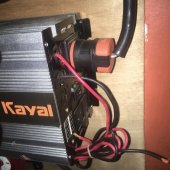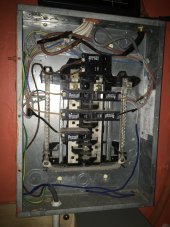Bowlegs868
New Member
My solar installer set up my system with the output of the pure sine wave inverter feeding into a 30A breaker panel via one of the inverter's 15A AC outlets. The output of that breaker is wired into the main breaker panel of the home which is currently off-grid.
After reading a bit about grounding an off-grid system, I decided to run some checks using the continuity mode on my multimeter.
The neutral and ground on the inverter's output and the home's electrical outlets (mains) didn't beep but IT DID on the smaller 30A breaker panel that connects to the main breaker panel!
The system has worked fine*** but I'm now a little concerned. What do you guys think?
After reading a bit about grounding an off-grid system, I decided to run some checks using the continuity mode on my multimeter.
The neutral and ground on the inverter's output and the home's electrical outlets (mains) didn't beep but IT DID on the smaller 30A breaker panel that connects to the main breaker panel!
The system has worked fine*** but I'm now a little concerned. What do you guys think?





